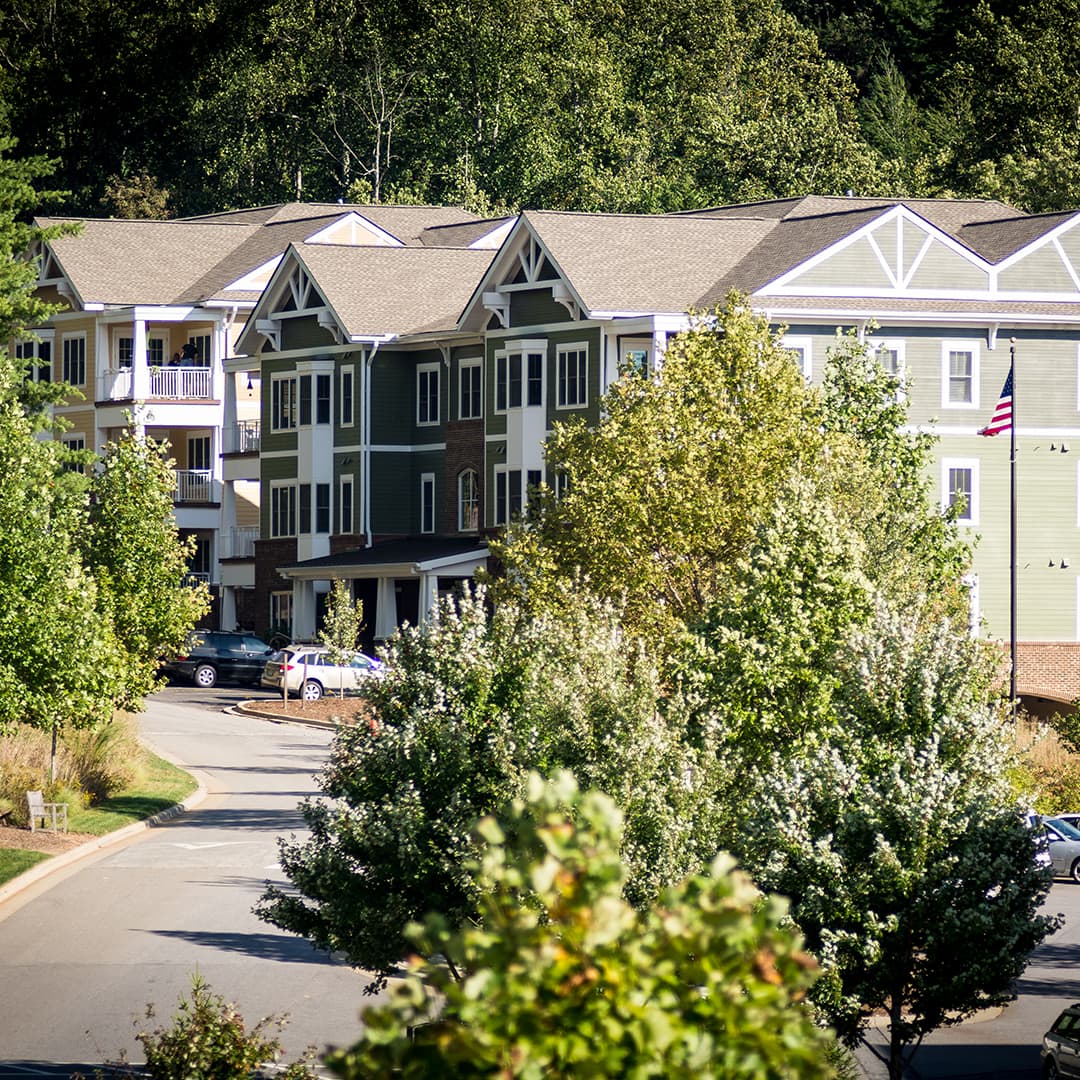Aging Healthy: Top Tips for Every Stage of Life
Aging healthy means making choices that help you stay physically and mentally fit as you grow older. This article provides…

Aging healthy means making choices that help you stay physically and mentally fit as you grow older. This article provides tips on healthy eating, regular physical activity, sleep health, and preventing chronic diseases. Additionally, we’ll cover mental and emotional well-being and offer guidance on community resources and support. Let’s explore how to age healthily.
Key Takeaways
- Adopting a healthy lifestyle, including nutrition, physical activity, and sleep hygiene, is essential for improving quality of life and preventing chronic diseases in older adults.
- Community resources, such as health promotion programs and caregiver support, play a vital role in assisting older adults in maintaining their independence and managing health effectively.
- Mental and emotional well-being significantly impacts older adults’ quality of life, with social connections and engagement in cognitive activities helping combat feelings of isolation and decline in cognitive function.
Adopting a Healthy Lifestyle

The cornerstone of healthy aging lies in adopting a healthy lifestyle. It’s about making conscious choices that positively impact your well-being. Programs focused on healthy aging aim to help older adults stay healthy, improving their overall quality of life. With a rapidly growing demographic of those aged 65 and older, projected to reach around 78.3 million by 2040, focusing on healthy lifestyle choices has never been more critical. Community health programs and resources, like those offered by the Center for Healthy Aging, play a crucial role in promoting these healthy habits.
How Community Healthcare and Lifestyle Choices Work Together
Staying updated on current studies and engaging with wellness programs can significantly influence health outcomes for older adults. Community-integrated healthcare is vital for enabling older adults to live independently while accessing necessary services. Engaging with updated information and health promotion programs enables older adults to make informed decisions for better health outcomes. A healthy lifestyle encompasses several key areas, including healthy eating, regular physical activity, and good sleep habits. Concentrating on these aspects helps older adults reduce the risk of chronic health conditions and enhance their overall well-being. Let’s explore each of these components in more detail.
Healthy Eating
Nutrition plays a pivotal role in healthy aging. A balanced diet should include a variety of foods to ensure adequate intake of essential nutrients. Recent studies indicate that a diet rich in fruits, vegetables, and whole grains is linked to a greater likelihood of aging without chronic diseases. This dietary approach not only supports physical health but also contributes to brain health and overall well-being.
Protein is a Building Block to Healthy Eating
Protein is especially important for older adults as it helps preserve muscle mass, which can decline with age. Ensuring adequate protein intake through sources like lean meats, fish, beans, and legumes is vital for maintaining strength and mobility. Hydration is equally crucial, as the sense of thirst diminishes with age. Older adults should consume plenty of water and nutrient-rich beverages to stay healthy.
How Senior Communities Support Nutrition and Wellness
Residents of senior communities often benefit from well-balanced meals and planned fitness programs that contribute to better overall health. These communities provide structured support that makes healthy eating easier to maintain. Emphasizing nutrition allows older adults to significantly enhance their health outcomes and enjoy a higher quality of life. Incorporating these dietary practices into daily life can help prevent chronic health conditions and support a healthy lifestyle. Prioritizing nutrition is a foundational step in achieving healthy aging.
Physical Activity
Regular physical activity is a cornerstone of healthy aging. Engaging in exercise enhances various health aspects, including balance, strength, and mental function. Older adults are advised to achieve at least 150 minutes of moderate physical activity weekly to maintain health. This can include activities like walking, swimming, or cycling. Strength, balance, and flexibility exercises are recommended at least twice a week to reduce the risk of falls and improve overall mobility. Programs designed for older adults, such as the ‘Otago Exercise Program’, focus on these areas and have been shown to reduce falls by 35-40% among frail older adults.
Disease Prevention
Physical activity also plays a significant role in disease prevention. Regular exercise can help prevent chronic diseases such as heart disease and diabetes. Remaining active helps older adults manage existing health problems more effectively and boosts their overall quality of life. Incorporating physical activity into daily routines can make a substantial difference in health outcomes. Whether through structured exercise programs or simple daily activities, staying active is key to living longer and healthier work.
Sleep Health
Quality sleep is essential for healthy aging. Developing good sleep habits can help improve sleep quality and duration among older adults. Establishing a regular sleep schedule and creating a restful environment are simple yet effective ways to enhance sleep health. Sleep plays a vital role in overall well-being, impacting both physical and mental health. For older adults, quality sleep is linked to better cognitive function and emotional stability. Poor sleep can exacerbate health problems and negatively affect quality of life, making it crucial to prioritize good sleep hygiene.
Get Quality Sleep for a Quality Life
Improving sleep health supports overall well-being and leads to a more fulfilling life for older adults. Simple changes, such as avoiding caffeine before bed and maintaining a consistent sleep routine, can make a significant difference.
Preventing Chronic Health Conditions

Preventing chronic health conditions is essential for healthy aging. Chronic diseases such as heart disease, diabetes, and cancer can significantly impact quality of life. Adopting a healthy lifestyle, including proper nutrition, regular physical activity, and good sleep habits, is key to preventing these things.
Supporting Healthy Aging with Prevention Programs
Programs that assist with healthy aging can help in preventing falls and managing chronic conditions. Most chronic diseases are linked to common risk factors such as smoking and poor diet. Addressing these risk factors helps older adults reduce their likelihood of developing chronic health issues. Evidence-based health promotion programs are crucial for preventing chronic diseases. They contribute significantly to overall health management and improvement. These programs provide valuable resources and support, helping older adults stay healthy and manage their health more effectively.
Disease Prevention
Disease prevention is a critical component of healthy aging. Vaccinations can significantly reduce the risk of serious illnesses in older adults. The CDC provides comprehensive guidelines and recommendations for vaccinations and health screenings, ensuring that older adults receive the preventive care they need.
Get Moving to Reduce Diseases
Physical activity, even at moderate levels, is linked to a reduced risk of chronic diseases among seniors. Regular exercise can help prevent conditions like heart disease and diabetes, making it an essential part of disease prevention strategies.
Staying current with vaccinations and maintaining regular physical activity helps older adults proactively prevent chronic health conditions and maintain good health.
Managing Chronic Conditions
Managing chronic conditions is crucial for maintaining quality of life in older adults. Monitoring blood sugar levels is essential for those managing diabetes. Regular physical activity, such as 150 minutes of moderate aerobic activity each week, promotes cardiovascular health and helps manage chronic conditions.
Individualized Care Plans are the Key
Many seniors experience multiple chronic illnesses, complicating their management. Home-based cardiac rehabilitation programs have shown variable effectiveness in improving health outcomes, highlighting the need for individualized care plans. Senior living communities often provide tailored support that allows residents to maintain independence while receiving necessary care. These communities offer structured programs and resources to help older adults manage their health effectively.
Risk Factors
Understanding risk factors is essential for disease prevention. For older adults, maintaining a varied diet can lower the risk of chronic illnesses such as heart disease and diabetes. Good nutrition supports physical health and improves quality of life.
Heart Health and the Power of Physical Activity
Engaging in regular physical activity reduces the risk of heart disease and stroke among older adults. Obesity is a significant risk factor that can lead to various chronic health issues. Addressing these risk factors through healthy lifestyle choices can significantly reduce the likelihood of developing chronic conditions.
Older adults may also experience heightened risks from substance abuse due to interactions with medications and underlying health conditions. Understanding and mitigating these risks enhances overall health and well-being for older adults.
Mental and Emotional Well-Being

Mental and emotional well-being is critical for older adults, significantly impacting their quality of life and overall well-being. Quality sleep influences both physical and mental health, making it an essential aspect of overall wellness and living longer. Addressing mental health issues, such as depression and anxiety, is crucial for maintaining good health.
Living in community settings can significantly improve mental and emotional health among older adults. These environments provide opportunities for social interaction and support, reducing feelings of loneliness and isolation.
Social Connections
Social engagement significantly enhances mental health and can mitigate feelings of loneliness and isolation among older adults. Maintaining strong social ties leads to notable health benefits, including reduced risks of depression and anxiety. Engaging with others enhances life satisfaction and mental well-being.
The Social Side of Healthy Aging
Community living arrangements facilitate social interactions, reducing loneliness and promoting mental and emotional well-being. Senior communities offer structured social activities that promote engagement, improving overall health outcomes.
Living in a senior community reduces the risk of social isolation, which is linked to improved mental and physical health outcomes.
Brain Health
Engaging in activities that challenge the mind helps preserve cognitive functions and can mitigate the effects of cognitive decline. Regular mental challenges, such as puzzles and learning new skills, help preserve cognitive abilities as people age. Engaging in cognitive activities, such as puzzles or reading, is linked to a lower risk of cognitive decline in older adults. Physical activity also plays a significant role in improving cognitive function. Prioritizing brain health helps older adults maintain cognitive abilities and enjoy a higher quality of life.
Substance Abuse
Older adults often face higher risks of substance misuse, particularly with prescription medications, due to factors like chronic pain or mental health issues. Excessive alcohol consumption and smoking are major risk factors that can lead to various chronic health issues.
A significant number of adults aged 65 and older struggle with substance use disorders, often related to alcohol and prescription medications. Resources are available for older adults seeking support and treatment for substance abuse issues, helping them manage their health more effectively.
Safety and Fall Prevention

Falls rank as one of the primary causes of injuries among older adults. Implementing safety measures can significantly reduce the risk of falls and improve overall well-being. Substance abuse poses significant dangers, including increased risks of falls and cognitive impairment.
Home Safety
Removing hazards like loose rugs and improving lighting can significantly enhance home safety for seniors. Using nonslip mats in bathrooms and making simple modifications, such as installing grab bars, can reduce the risk of falls. Ensuring a safe home environment is crucial for older adults to reduce the risk of falls and injuries. These measures help protect older adults and support healthy aging.
Evidence Based Fall Prevention Programs
Programs like ‘A Matter of Balance’ focus on building confidence and improving activity levels to help older adults manage the fear of falling. The ‘Stepping On’ program helps older adults regain confidence and encourages physical activity to prevent falls and change their approach to staying active. Many fall prevention initiatives involve assessing and modifying an individual’s home environment. These programs provide structured support to reduce the risk of falls and promote healthy aging.
Community Resources and Support

Community-integrated health care is essential for aging in place and delivering services to older adults. Community resources and support systems are crucial for aging individuals to thrive and maintain their independence.
Health Promotion Programs
Health promotion programs play a significant role in encouraging healthy aging and improving the quality of life for older adults. Initiatives like the Healthy People 2030 offer measurable objectives focused on enhancing the health and well-being of older adults. The World Health Organization also provides a wealth of resources and updates on healthy aging through its dedicated platform.
Community-based fall prevention programs often integrate social engagement, which can enhance their effectiveness in reducing fall risk. National health promotion programs emphasize the importance of regular physical activity, healthy eating, and social interactions to maintain both physical and emotional well-being. By participating in these programs, older adults can adopt healthier lifestyles and benefit from structured support systems designed to promote good health and prevent chronic conditions.
Caregiver Support
Caregivers play a critical role in supporting older adults, and they need adequate resources to manage their responsibilities effectively. Caregiver support resources include training programs that educate caregivers on best practices for providing care. These programs can help caregivers understand the unique needs of older adults and how to address them.
Respite care services are available to give caregivers a break from their duties, helping to reduce caregiver stress and prevent burnout. The Administration for Community Living offers various resources specifically aimed at assisting caregivers of older adults.
Providing caregivers with the necessary support and resources is essential for ensuring that older adults receive the best possible care. These resources help caregivers manage their responsibilities while maintaining their well-being.
Community Living
Community living arrangements offer numerous benefits for older adults, including increased opportunities for social interactions and access to various activities and services. These environments help reduce feelings of loneliness and isolation, promoting mental and emotional well-being.
Enhancing Quality of Life Through Supportive Services
Support systems, such as community centers and transportation services, play a vital role in maintaining the autonomy and independence of older adults living in these environments. A supportive network in community living significantly enhances the quality of life for older adults. Living in a community setting can help older adults stay engaged, active, and healthy, contributing to a more fulfilling and enjoyable life through collaboration.
Staying Informed
Staying informed about the latest data and research on healthy aging is crucial for older adults to make informed health decisions. Continuous learning and understanding of effective health strategies can significantly improve quality of life as we age. Reliable sources of information, such as government health sites, respected medical organizations, and peer-reviewed journals, offer accurate and trustworthy guidance on healthy aging.
Staying updated on the latest research allows older adults to adopt evidence-based practices that enhance their health and well-being. This proactive approach to health can help older adults maintain their independence and thrive.
Latest Research
The National Institutes of Health (NIH) provides access to research articles and guidelines specifically aimed at promoting health among older adults. These resources are invaluable for understanding effective strategies and practices that can enhance health outcomes in older populations.
Knowledge is Power: Using Research to Age Well
Staying informed about the latest research related to aging and health is crucial for improving quality of life. Older adults should actively seek out this research to make informed decisions about their health and wellness. Engaging with the latest data and evidence-based programs enables older adults to adopt practices supporting healthy aging and contributing to a higher quality of life.
Reliable Sources
Reputable health organizations like WHO and NIH offer valuable resources and research to help you find information pertaining to healthy aging. MyHealthfinder provides accessible health information specifically designed for older adults, covering various health topics and preventive care.
These reliable sources ensure that older adults have access to accurate and up-to-date information, which is crucial for making informed health decisions. Relying on evidence-based programs and professionals’ guidance helps older adults maintain their independence and well-being.
Staying informed through these trusted sources can help older adults learn to navigate the complexities of aging and adopt practices that promote long-term health.
Summary
Healthy aging is a multifaceted journey that involves adopting a healthy lifestyle, preventing chronic health conditions, addressing health problems, and maintaining mental and emotional well-being. By focusing on nutrition, physical activity, sleep health, and staying informed, older adults can significantly improve their quality of life. Community resources, caregiver support, and reliable information play crucial roles in supporting these efforts. Embrace these tips and strategies to thrive and enjoy a vibrant, fulfilling life as you age.
Frequently Asked Questions
What are some key components of a healthy lifestyle for older adults?
A healthy lifestyle for older adults consists of nutritious eating, consistent physical activity, adequate sleep, and staying updated on health information. These components are essential for maintaining overall well-being and vitality and reducing health problems.
How can older adults prevent chronic health conditions?
To prevent chronic health conditions, older adults should focus on maintaining a healthy lifestyle, which includes staying physically active, eating a balanced diet, getting regular vaccinations, and avoiding harmful habits like smoking. This proactive approach is essential for long-term well-being.
Why is mental and emotional well-being important for older adults?
Mental and emotional well-being is crucial for older adults as it greatly affects their quality of life and decreases the likelihood of depression, anxiety, and cognitive decline. Maintaining social connections and engaging in community activities can further enhance their mental health.
What safety measures can older adults take to prevent falls at home?
To prevent falls at home, older adults should remove hazards such as loose rugs, use nonslip mats in bathrooms, install grab bars, and ensure adequate lighting throughout the home. Taking these steps significantly enhances safety and reduces fall risks.
Where can older adults find reliable health information?
Older adults can find reliable health information through reputable organizations such as the World Health Organization (WHO), National Institutes of Health (NIH), and MyHealthfinder, which provide evidence-based resources on healthy aging.







